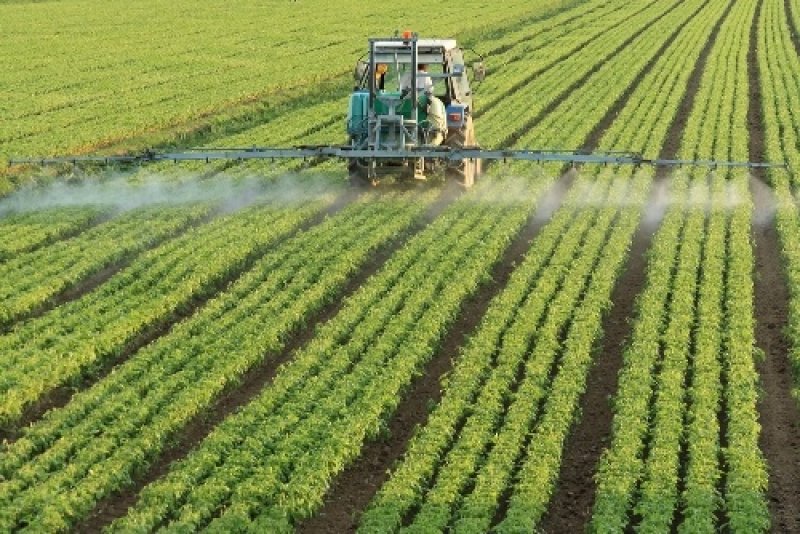The four transnational corporations that are experimenting with genetically engineered crops on Kauai have transformed part of the island into one of most toxic chemical environments in all of American agriculture.
[NOTE: For an alternative perspective on the issue of the ‘overuse’ of farm chemicals, read “Myth: GM farmers “drown” crops in “dangerous” glyphosate. Fact: Farmers use eye droppers” by Iowa farmer Dave Walton]For the better part of two decades, BASF Plant Science, Dow AgroSciences, DuPont Pioneer, and Syngenta have been drenching their test crops near the small town of Waimea on the southwest coast of Kauai with some of the most dangerous synthetic pesticides in use in agriculture today, at an intensity that far surpasses the norm at most other American farms, an analysis of government pesticide databases shows.
Each of the seven highly toxic chemicals most commonly used on the test fields has been linked to a variety of serious health problems ranging from childhood cognitive disorders to cancer. And when applied together in a toxic cocktail, their joint action can make them even more dangerous to exposed people.
Perhaps no one personifies the battle better than Klayton Kubo, who lives at the east end of Waimea, at the heart of what he calls “poison valley.” He showed this reporter a brief video of himself cleaning the screen covering the window on the street side of his house. Clogged with reddish dirt similar in appearance to volcanic soils found throughout the island, the screen is his house’s last line of defense against the dust. However, it blocks only the biggest chunks, and can do nothing to stop smaller pieces of grit, toxic vapors, and chemical odors that appear to be emanating from DuPont test fields located just beyond the street and Waimea River in front of his house.
At the other end of town, the Waimea Canyon Middle School, a health clinic, and a veterans’ hospital line up in front of another GMO test field operated by Syngenta. In two incidents in 2006 and 2008, students at the school were evacuated and about 60 were hospitalized with flu-like symptoms like dizziness, headaches, and nausea. Many people in town blamed the outbreak on blowing dust from the GMO test fields. Steady northeasterly trade winds averaging between 8 and 9 miles per hour blow daily across the test fields and into town. The companies blamed nearby fields of noxious stinkweed.
In an attempt to find out what actually happened, federal, state, and local government agencies in 2010 collaborated to test the air at the school for the presence of 24 kinds of toxic pesticides used on the test fields as well as for chemicals emitted by stinkweed. The study was inconclusive, finding that the “symptoms could be consistent with exposure to certain pesticides, but could also be caused by exposure to volatile chemicals emitted from natural sources, such as stinkweed.” It detected traces of the toxic pesticide chlorpyrifos in the air both inside and outside the school, but said it found “no evidence to indicate that pesticides had been used improperly.” Concentrations of all chemicals were below EPA exposure limits.
Some of the pesticides in use on the test fields around Waimea are toxic enough to pose a serious health threat to its population of 1,855, even when used according to directions. These are classified as “restricted use pesticides,” meaning they are more tightly regulated by the EPA than “general use pesticides.” The restricted-use chemicals applied most heavily on the GMO test fields of Kauai are alachlor, atrazine, chlorpyrifos, methomyl, metolachlor, paraquat, and permethrin.
The four agribusiness companies with test plots on Kauai have voluntarily released data about how much of the restricted pesticides they used on the fields from December 2013 through April 2014; the information is now available in a database on the Hawaii state government website. We compared that information to 2009 data from a U.S. Geological Survey database on pesticide usage in the United States.
We found that annualized pounds-per-acre usage of the seven highly toxic pesticides on Kauai was greater, on average, than in all but four states: Florida, Louisiana, North Carolina, and Indiana. Steve Savage, a former manager of research at DuPont and a former professor at Colorado State University, has also found that the overall pounds-per-acre pesticide usage on Kauai is among the highest in the nation, but he said that 98 percent of the pesticides used on the island are general-use ones that are less toxic than a cup of coffee.
Savage may be right on that point, but the remaining 2 percent give serious cause for concern. “Different pesticides can vary in something like their toxicity to mammals by more than a thousand-fold,” he said.
Read the full, original article: GMO companies are dousing Hawaiian island with toxic pesticides































